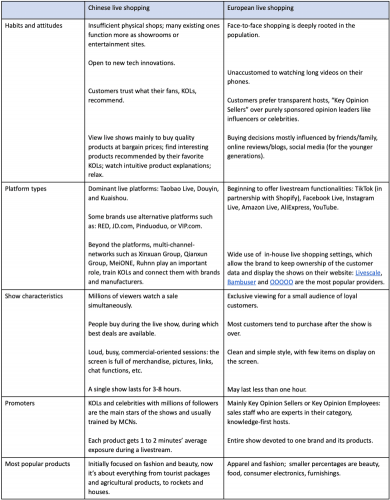Xiaohongshu’s registers new trademark ‘Laohongshu’, eyeing Chinese elders
Xiaohongshu is now focusing on the elderly in China, a profitable customer segment that is mostly untapped.
More lately, elder generations have witnessed a surge in internet usage, becoming more tech-savvy as a result of the pandemic, to the point that a new wave of influencers over 55 has emerged. In the next few decades, China’s elderly population is expected to exceed 500 million. They are the generation that is catching up on social media and becoming more visible, particularly on short-form video platforms.
Xiaohongshu justified the registration as a defensive measure after discovering that many other parties were attempting to register the Laohongshu trademark ahead of time. As a result, a defensive registration has been implemented to keep malevolent squatters at bay.
It all began when Youyou Video, a new app, was released in June, around the same time as the trademark application was filed. With features such as bigger fonts, voice remarks and feeds that include tips on age-reducing clothes and makeup, the app displays a focus to the middle-to-elite-class senior female users.
With the Chinese population rising and more people entering the digital world, Chinese elders are becoming a new market that Internet companies like Xiaohongshu are vying for.
Link: https://daoinsights.com/news/xiaohongshus-new-trademark-registration-approved-eyeing-chinese-elders/
Crackdowns in live streaming in China: how brands should approach it
Key takeaways:
- As the Chinese government promotes the ‘Common Prosperity’ concept, the government is cracking down on live streaming.
- Foreign brands should pay greater attention to the government’s live streaming laws and alter their tactics accordingly.
- Brands should ensure that their collaborating influencers follow the regulations of the government, or at the very least that the influencers’ personal behaviours do not have a substantial impact on them. Viya had to pay a record-high sum for tax evasion despite being the “live streaming queen.”
- Based on the restrictions issued by the government, e-commerce platforms are likely to tighten their regulations. Although the guidelines are still in the works, they are expected to limit live steamers the ability to use the platform in the way users are used to. They should, for example, speak Mandarin and dress more appropriately.
In China, crackdowns on live streaming do not always imply that the government is opposed to it. Rather, it means that businesses should ensure that their live streaming strategies are in line with, or at the very least do not contradict, government rules.
Link: https://daxueconsulting.com/chinese-livestreaming-crackdown/
How Do Brands Encourage User-generated Content On Bilibili?
Bilibili began as a video platform for anime, comics, and games. It is now one of the most widely used video platforms among Chinese Generation Z. It’s also known for having a very active community.
UGC is one of the most engaging mediums that companies can use (user-generated content). Because Bilibili users respect authenticity, high-quality user-generated content (UGC) can quickly go viral, allowing the business to reach thousands of new prospective customers, stimulate product development, and more.
Link: https://mp.weixin.qq.com/s/phbEIoaoBg7Ipik8F5YF_g
Tapping into the explosive growth of personalized beauty in China
In traditional offline beauty stores, sales associates greet customers, try to understand their needs and make product recommendations.
That has changed now. People may now access massive amounts of information with a few easy clicks at home thanks to modern technologies. Algorithms aid in the limiting of the knowledge pool, while other users’ ratings and reviews on social media assist in determining whether a product is truly effective. COVID merely accelerated the process.
They are guided by a variety of diagnostic tools, artificial intelligence (AI), widgets, applications, online quizzes, and online experts. However, in many cases, none of the items is actually individualised. The technologies under discussion are more concerned with speeding up the decision-making process of consumers than with meeting their actual demands.
WeChat’s powerful ecosystem provides a full data collection, branding, marketing, selling, and brand refresh cycle.
Link: https://beautymatter.com/articles/tapping-into-the-explosive-growth-of-personalized-beauty-in-china
WeChat Red packet cover
New shape: from rectangle to different other shapes
New ways to get: the users can get them from their Moments.
Users who receive Moments ads with the label “shake out surprises” can shake and receive the red packet cover. If the sponsors give you “one more” chance, you can share the cover with one of your friends and they will receive one as well.
Link: https://mp.weixin.qq.com/s/3JzCpTEFbG7rQWPyvnVfow
Bilibili 2021 Top 100 uploaders
Bilibili selected 2021 Top 100 uploaders by their professionality, influence and creativity and will hold a ceremony this Friday at 19:00. It’s a good opportunity to know why they are outstanding from the uploaders.
Link: https://mp.weixin.qq.com/s/5PooWe308n67FhdD9fmW9Q
Wecom 2022 new product launch conference summary
At the new product launch in 2022, Wecom mainly talked about three major points.
- The first point is to connect the consumer market and bring businesses closer to their customers, as evidenced by the channel and WeChat customer care. When watching the video, watching the live broadcast, or on the main page, users can add Wecom personnel to the video number. WeChat customer service means that it can be customised whether it is in the official account channel mini programme or outside of WeChat.
- The second point is to establish a connection between upstream and downstream partners. Companies from upstream and downstream can join the corporate address book and contact each other at any time. People from various companies can collaborate to produce papers that can then be shared with a single click.
- The third point is that enterprise Wechat has partnered with Tencent to establish a new office function called Tencent document Tencent conference. Working on, viewing, and commenting on online papers is convenient for a large group of individuals. WeChat allows users from outside the company to collaborate on documents. Internal and external colleagues, partners, and other meetings can be invited to online meetings. There are further features like meeting minutes that can be sorted into text records automatically.




